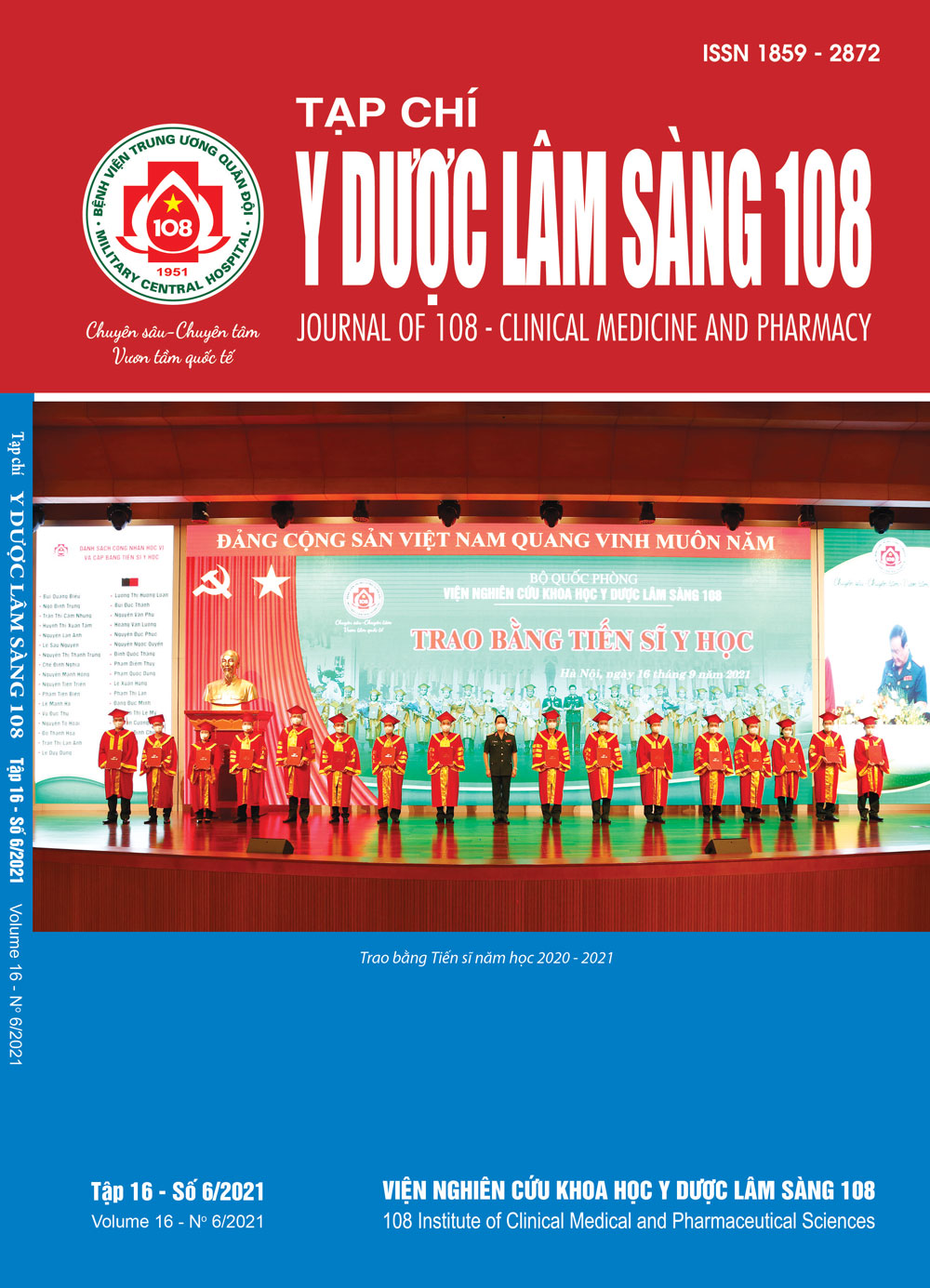Evaluation of the effect of nasojejunal tube placement after laparoscopic total gastrectomy for gastric cancer
Main Article Content
Keywords
Abstract
Objective: To evaluate the effect of nasojejunal tube placement after laparoscopic total gastrectomy for gastric cancer. Subject and method: The retrospective descriptive study of 126 patients with gastric cancer who underwent laparoscopic total gastrectomy between January 2014 to May 2021 at Nghe An Friendship General Hospital. Result: In this study there were 126 patients with mean age of 60.6 ± 11.1 years. Male to female ratio was 2.8:1. 70.6% adenocarcinoma, 24.6% signet-ring cell carcinoma. The ratio of gastric cancer at stage I, II, III were 19.0%, 49.2%, 31.7% respectively. 73.0% of patients were underwent totally laparoscopic. There was no anastomosis postoperative complications. The average time of placing nasojejunal was 2.1 ± 2.2 days. Time of nasojejunal tube placement was related to pain severity, postoperative complications, time to passage of flatus, recovery movement and length of hospital stay (p<0.05). Conclusion: Nasojejunostomy after laparoscopic total gastrectomy increased pain severity, postoperative complication rates, time of bowel motility recovery and length of hospital stay.
Article Details
References
2. Japanese Gastric Cancer Association (2011) Japanese classification of gastric carcinoma - 3rd english edition. Gastric Cancer 14: 101-112.
3. Huong NV, Chien DV, Quyet HV, Duyet PV, Thuong PV, Ai DQ (2020) Results of laparoscopic total gastrectomy and D2 lymph node dissection with the left-site surgeon and final resection and closure of the duodenal stump in gastric cancer treatmen. Surg. Gastroenterol. Oncol 25(4): 199-205.
4. Doglietto GB, V Papa, AP Tortorellt, M Bossola, M Cavino, F Pacelli (2004) Nasojejunal tube placement after total gastrectomy: A multicenter prospective randomized trial. Arch Surg 139: 1309-1313.
5. Kimura Y, Yano H, Iwazawa T, Fujita J, Fujita S, Yamamoto K, Yasuda T (2017) One-day nasogastric tube decompression after distal gastrectomy: A prospective randomized study. Surg Today 377: 589-851.
6. Pacell F, Rosa F, Marrelli D, Morgagni P, Framarini M, Cristadoro L, Pedrazzani C, Casadel R, Cozzaglio L, Covino M, Donini A, Roviello F, Manzoni G, Doglietto GB (2013) Naso-gastric or naso-jejunal decompression after partial distal gastrectomy for gastric cancer. Final results of a multicenter prospective randomized trial. Gastric Cancer 319: 19-22.
7. Wang D, Li T, Yu J, Hu Y, Liu H, Li G (2014) Is nasogastric or nasojejunal decompression necessary following gastrectomy for gastric cancer? A systematic review and meta-analysis of randomised controlled trials. J Gastrointest Surg 19: 195-204.
8. Yang Z, Zheng Q, Wang Z (2008) Meta-analysis of the need for nasogastric or nasojejunal decompression after gastrectomy for gastric cancer. British Journal of Surgery 95: 809-816.
9. Wei ZW, Li JL, Li ZS, Hao YT, He YL, Chen W, Zhang CH (2014) Systematic review of nasogastric or nasojejunal decompression after gastrectomy for gastric cancer. EJSO 40: 1763-1770.
 ISSN: 1859 - 2872
ISSN: 1859 - 2872
